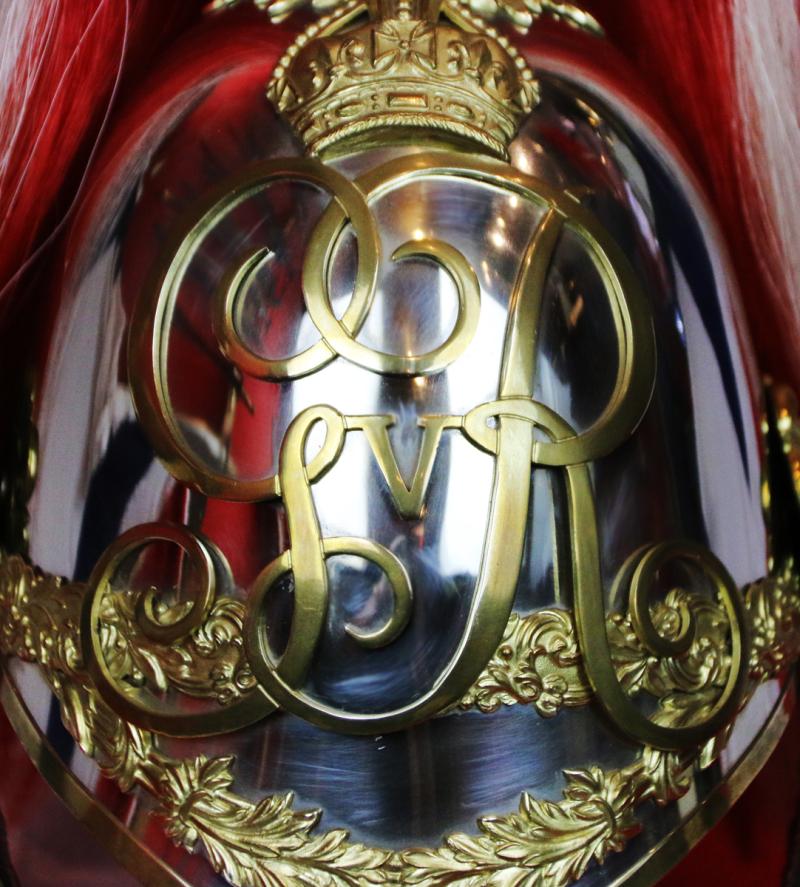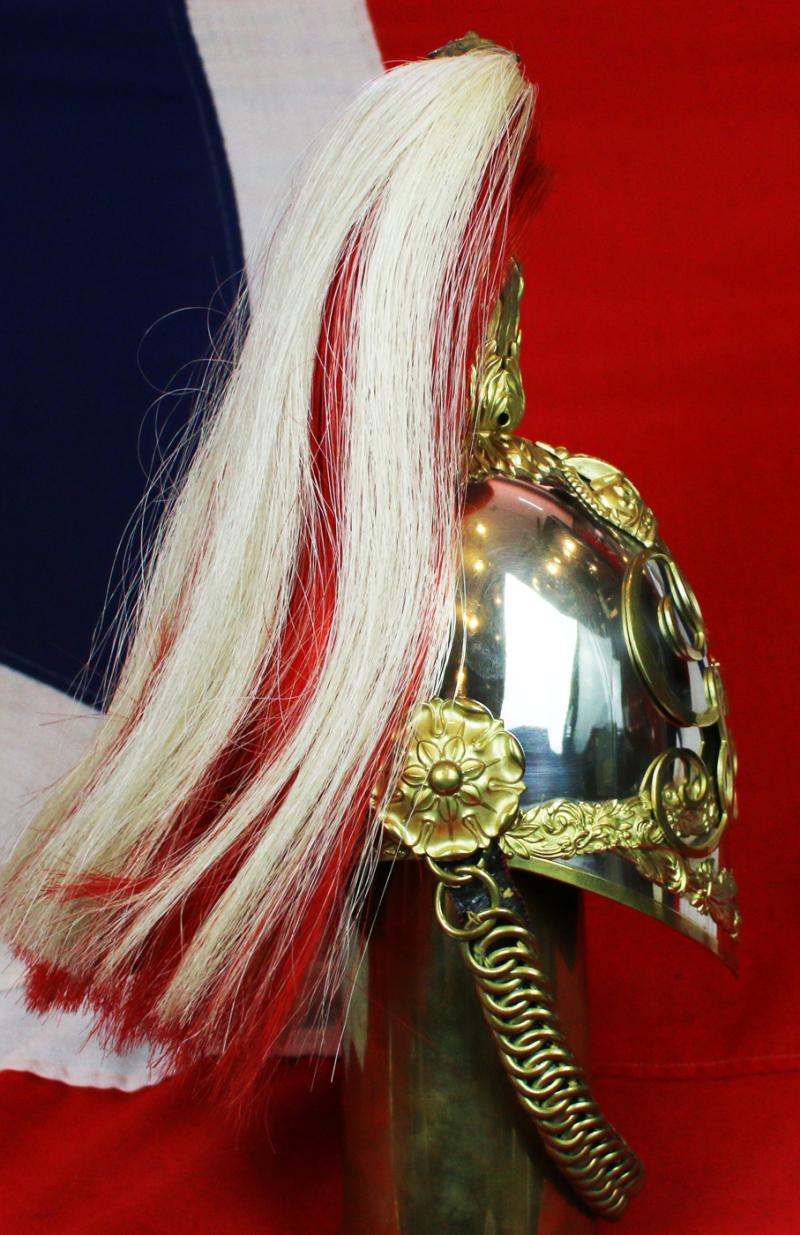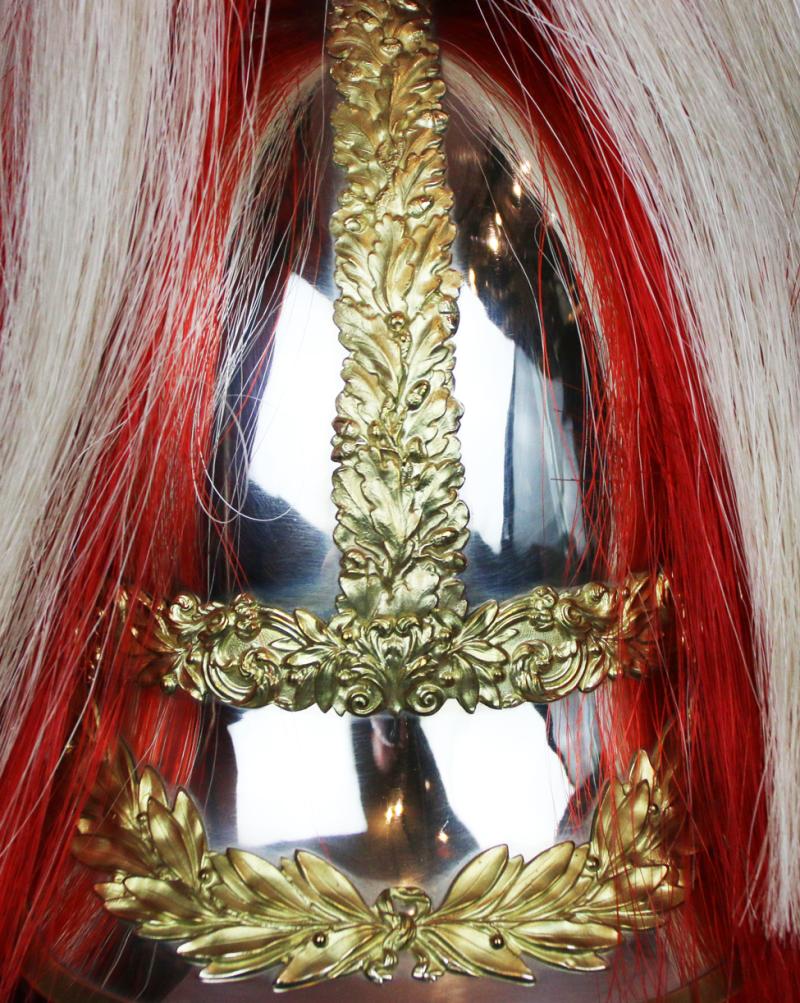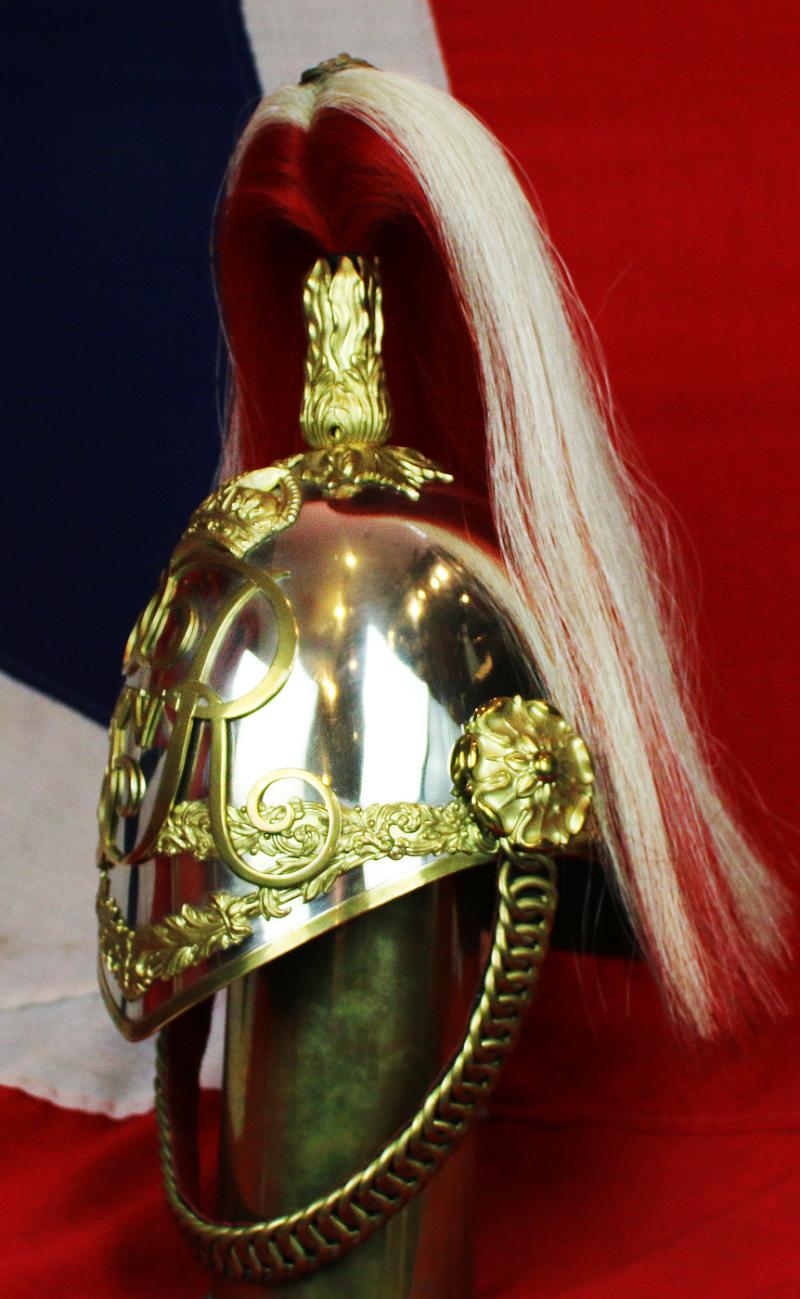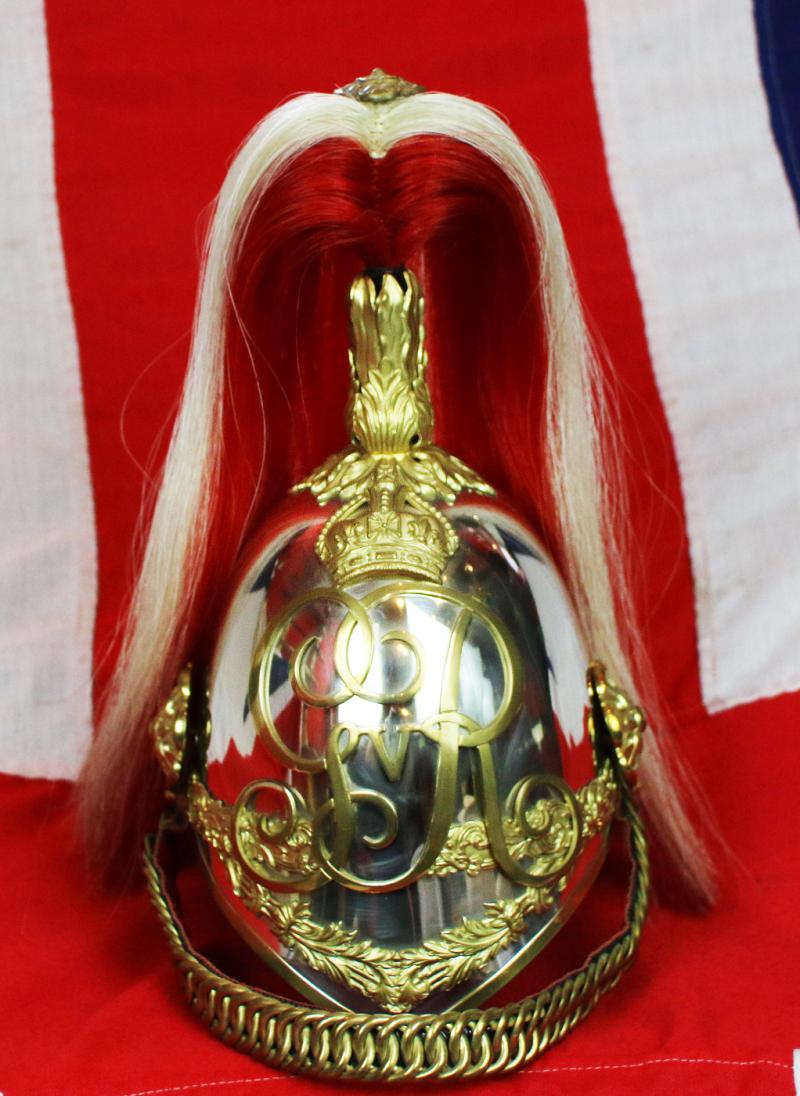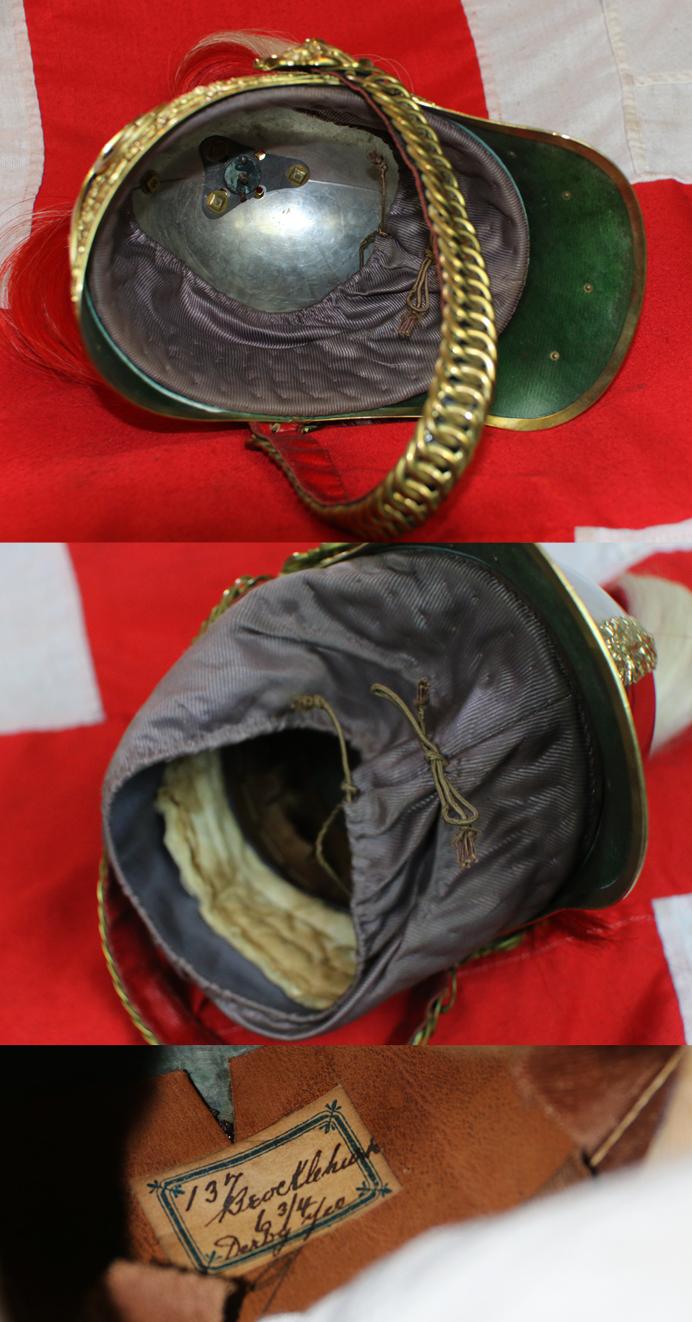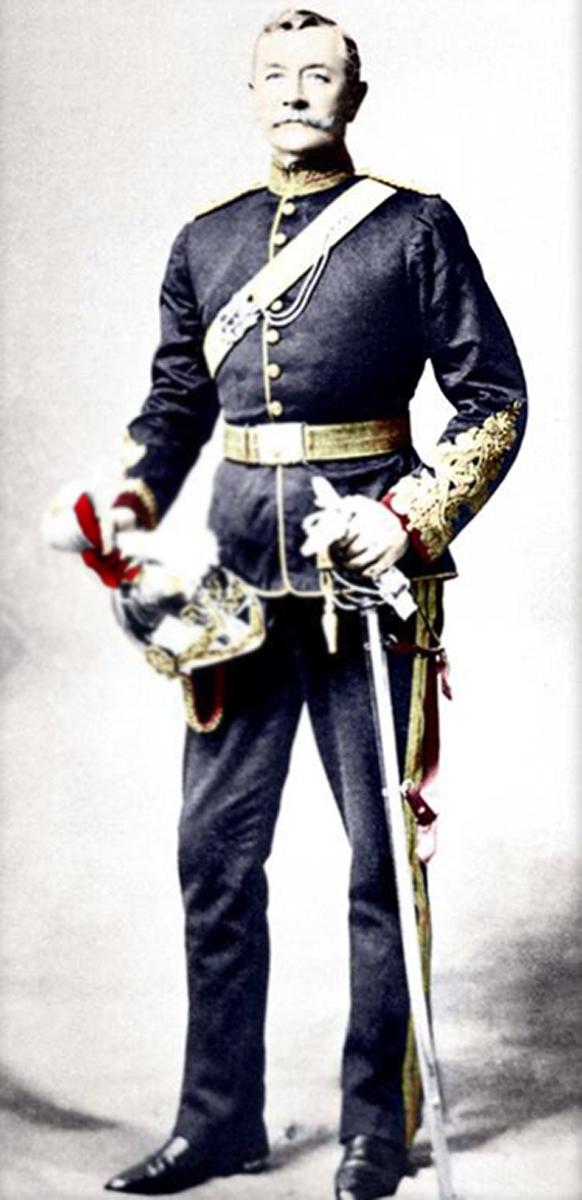A Superb Very Rare & Near Mint Antique Officer’s Albert Pattern Dragoon Helmet of the Derbyshire Yeomanry Cavalry 1910. One Of the Most Beautiful British Dress Helmets Ever Made
In stunning condition, just returned from light suface cleaning and conservation, as it has been untouched for around 40 years.
One of the best surviving examples one can see in or out of a museum, and truly one of the most beautiful dress helmets every made and used by the British cavalry.
The skull of white-metal with a gilt oakleaf strip up the back, gilt edging to the peaks, both mounted with gilt bayleaf sprays, massive gilt King’s Crown above the GvR cypher, all in gilt metal, white over red drooping horsehair plume in an 1847-style “Candlestick” socket with an acanthus-leaf base., wide gilt chin-chain attached by large rosettes, leather headband with lining of pleated lining of brown silk, in near mint condition
The Derbyshire Yeomanry was raised in 1794 and from about 1858 adopted the dress of dragoons with the adoption of the Albert pattern dragoon helmet with a white over red hanging plume, blue tunic and trousers with red facings and thin gold lace edging to collar and cuffs. This uniform went unchanged until the end of the century. The DYC provided the 8th Company, 4th Battalion Imperial Yeomanry for active service in South Africa during the Boer War 1899-1902. It subsequently saw service in Gallipoli and Macedonia during the 1914-18 War.
They first saw action in Sulva Bay in August 1915, part of the final British attempt to break the stalemate of Gallipoli, and were involved in capturing Chocolate Hill from the Turks and fought in the Battle of Scimitar Hill. However, they were ultimately pulled back and, after a brief stint in the Senussi Campaign, were moved to Salonika to fight against the pro-Germany Bulgars, landing there on the 7 February 1916.
This was a different war to the standard accounts of the Western Front. Ostensibly the British and French (roughly 100,000 men) were allied with the Greeks against a much-bigger force of Austrians, Turks and Bulgars, but the British and French were suspicious of their ally’s army of 400,000 who ‘might at any time turn round and combine with them against us’. And so begins a strange campaign of sporadic ‘guerilla’ type fighting (largely in the Struma Valley) via mounted patrols in difficult and cold mountainous terrain and regular aerial assault. (Trooper Coolings diary: ‘Mar.29. German Taube comes over & drops about 6 bombs all round the Camp, just as we were about to march off. The fires from the horse lines showed the mark.’) There was no miles-long complex system of trenches here like in France, though roads and encampments were protected by smaller entrenchments and barbed wire. The accounts that the War History and private diaries provide is a picture of a much odder war – of everything from of finding millions of frogs that were so loud that they first thought that they were under Zeppelin attack but which turned out to be edible, a police chief called Christos who claimed to have killed fifteen men, hot springs to bath in a village called Gola entirely populated by spies and a spring of natural soda-water that no one wanted to drink.
We have only seen three of these rare King George Vth period Derbyshire Cavalry helmets in the past 30 years, and remarkably the last one was only few months ago, in an esteemed auction in London, and it sold for £4,500, and, the buyer's fee was 25% {plus 20% vat.} = £1350
Code: 25890


